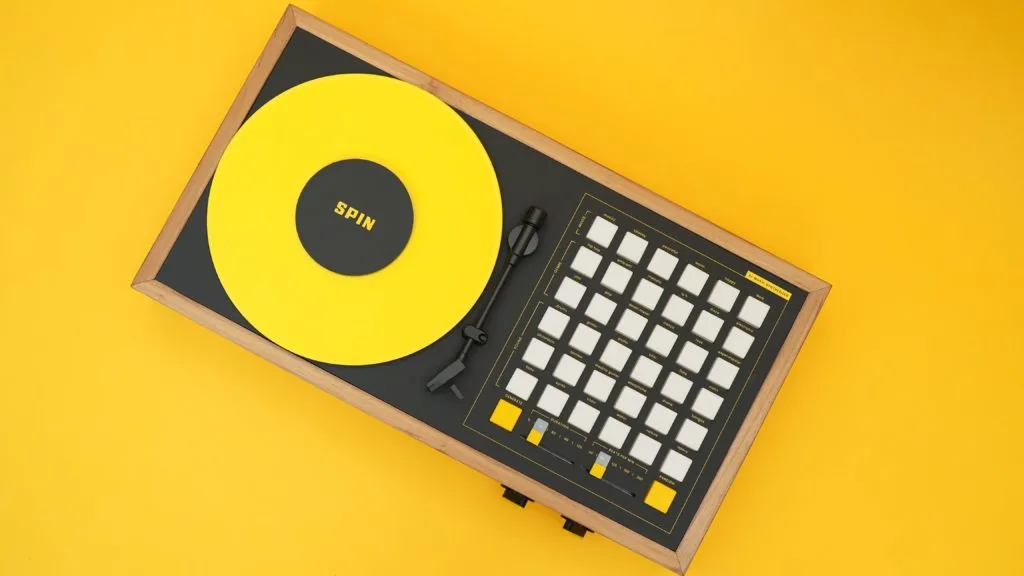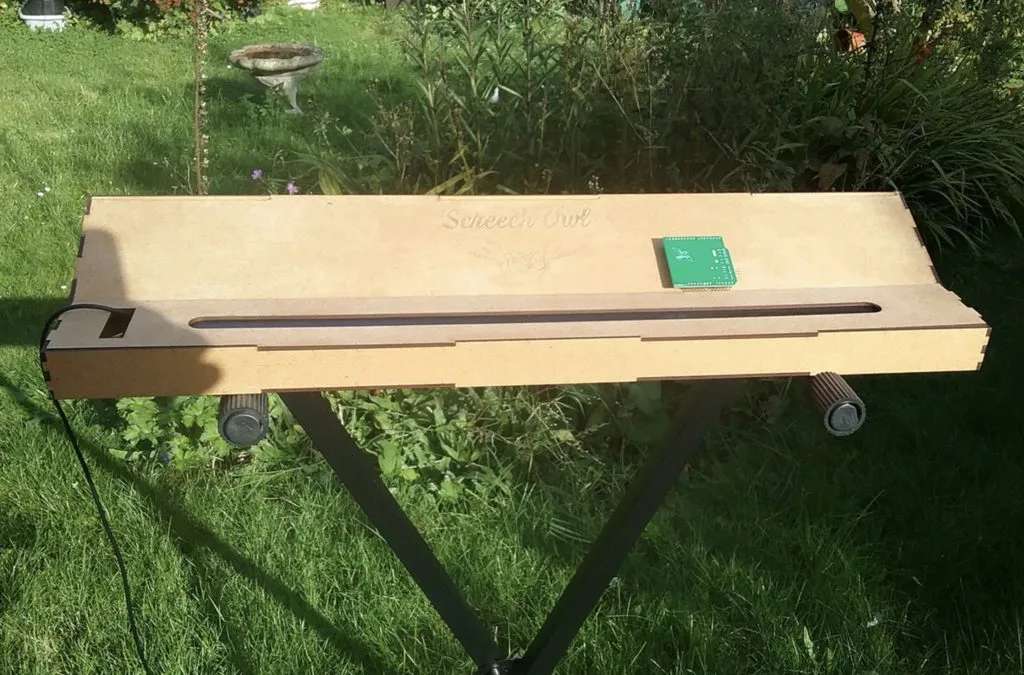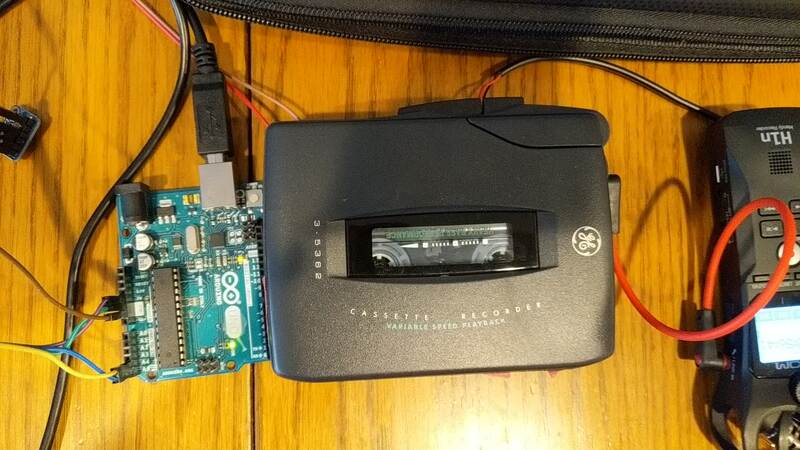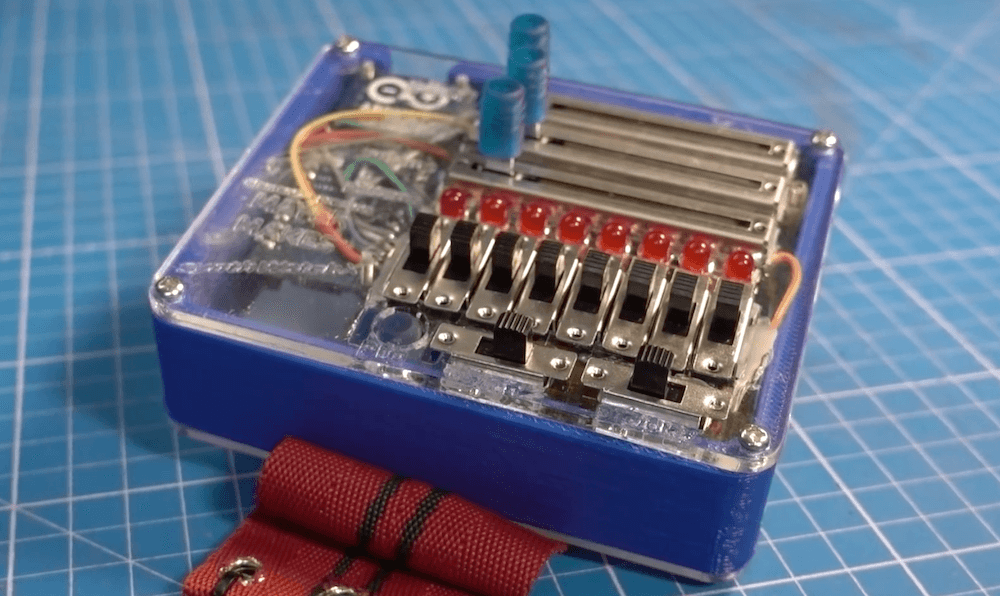Schlagwort: synthesizer
-

SPIN is a beautiful and imaginative AI synthesizer
Reading Time: 2 minutesIf you’re heard the pop music emanating from any recent reality TV show, you won’t be surprised to learn that AI is perfectly capable of generating tunes on demand. It won’t replace true artistry any time soon, but AI music fits all of the technical criteria. But typing a prompt is boring,…
-

Unique synthesizer screeches like an owl
Reading Time: 2 minutesThe Eowave Persephone was an interesting ribbon synthesizer that let musicians control frequency by moving their fingers across a long touch sensor. Ben Glover used to own one, but sold it. During shipping to the buyer, it got lost in the mail and so Glover can’t even buy it back. He regretted…
-

This Arduino Nano-based synthesizer can produce a wide range of intriguing sounds
Reading Time: 2 minutesSynthesizers have existed in their current form for several decades now. In essence, they generate simple waveforms that are then either added or subtracted together and modified through the use of filters, envelopes, and modulators to control pitch, volume, and several other characteristics. Due to their simplicity, many types of components can…
-

Convert an old cassette player into a synthesizer
Reading Time: < 1 minuteConvert an old cassette player into a synthesizer Arduino Team — September 22nd, 2020 Cassettes (if you remember those) are normally used to play back music and other audio, but what about using an old Walkman-style tape player as the instrument itself? That’s exactly what this project by Zack Scholl allows you to do,…
-

The Orb is a “rolly, tumbly, singy” synthesizer by Emily Velasco
Reading Time: 2 minutesThe Orb is a “rolly, tumbly, singy” synthesizer by Emily Velasco Arduino Team — April 7th, 2020 Some years ago, Emily Velasco started exploring the idea of creating a musical instrument based on a pendulum. This didn’t work out exactly the way she’d planned, but after several iterations — and inspiration from…
-

The Orb is a “rolly, tumbly, singy” synthesizer by Emily Velasco
Reading Time: 2 minutesThe Orb is a “rolly, tumbly, singy” synthesizer by Emily Velasco Arduino Team — April 7th, 2020 Some years ago, Emily Velasco started exploring the idea of creating a musical instrument based on a pendulum. This didn’t work out exactly the way she’d planned, but after several iterations — and inspiration from…
-

The ZT-2020 is a portable SunVox synth
Reading Time: < 1 minuteThe ZT-2020 is a portable SunVox synth Arduino Team — February 11th, 2020 SunVox synth software allows you to create electronic music on a wide variety of platforms. Now, with his ZT-2020 project — which resembles a miniature arcade game — YouTuber “fascinating earthbound objects” has a dedicated input scheme. This…
-

Wearable synth plays programmed or random tunes
Reading Time: < 1 minuteWearable synth plays programmed or random tunes Arduino Team — December 9th, 2019 Unless you’re very good, personal synths are fun for you — though often quite annoying for onlookers. After making his own wristwatch-based synth in 2016, Clem Mayer decided to build a new version that’s larger and louder than ever, and…
-

Bitty is a tiny Arduino-compatible drum machine/synth
Reading Time: 2 minutesBitty is a tiny Arduino-compatible drum machine/synth Arduino Team — May 2nd, 2019 There are a wide variety of ways to create electronic music. For a capable machine that fits in the palm of your hand and is loud enough to use outdoors, however, it’s hard to imagine a battery-powered device cooler…







